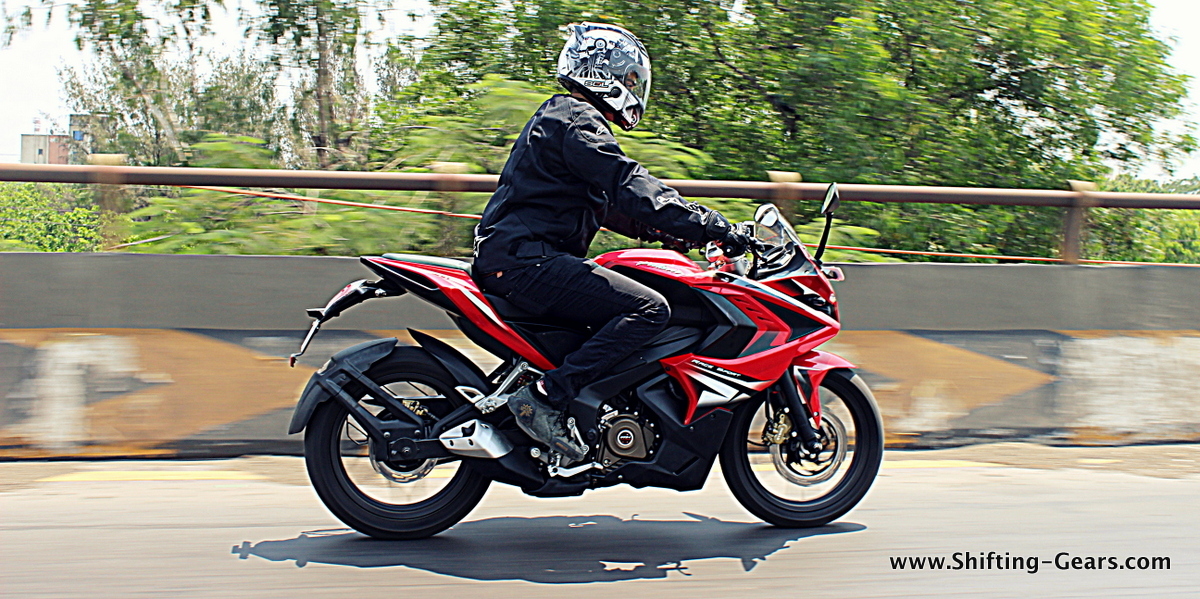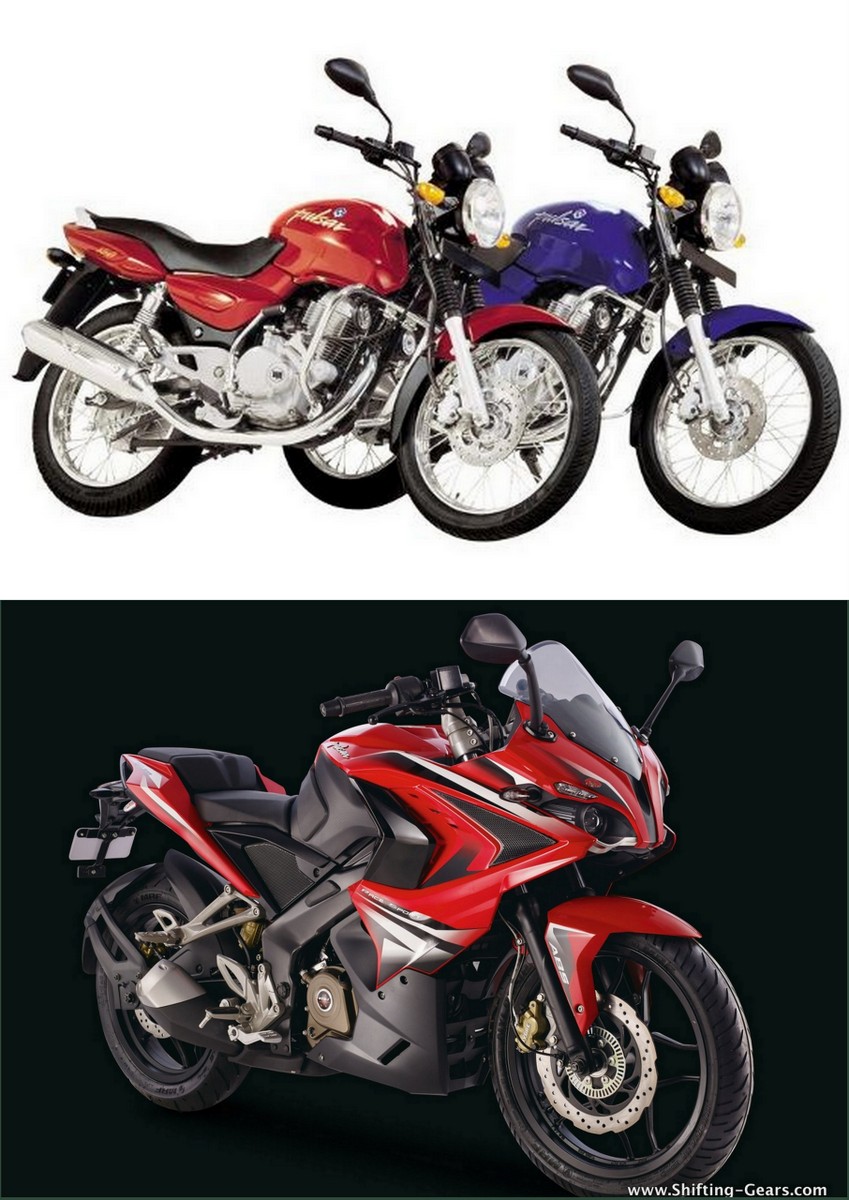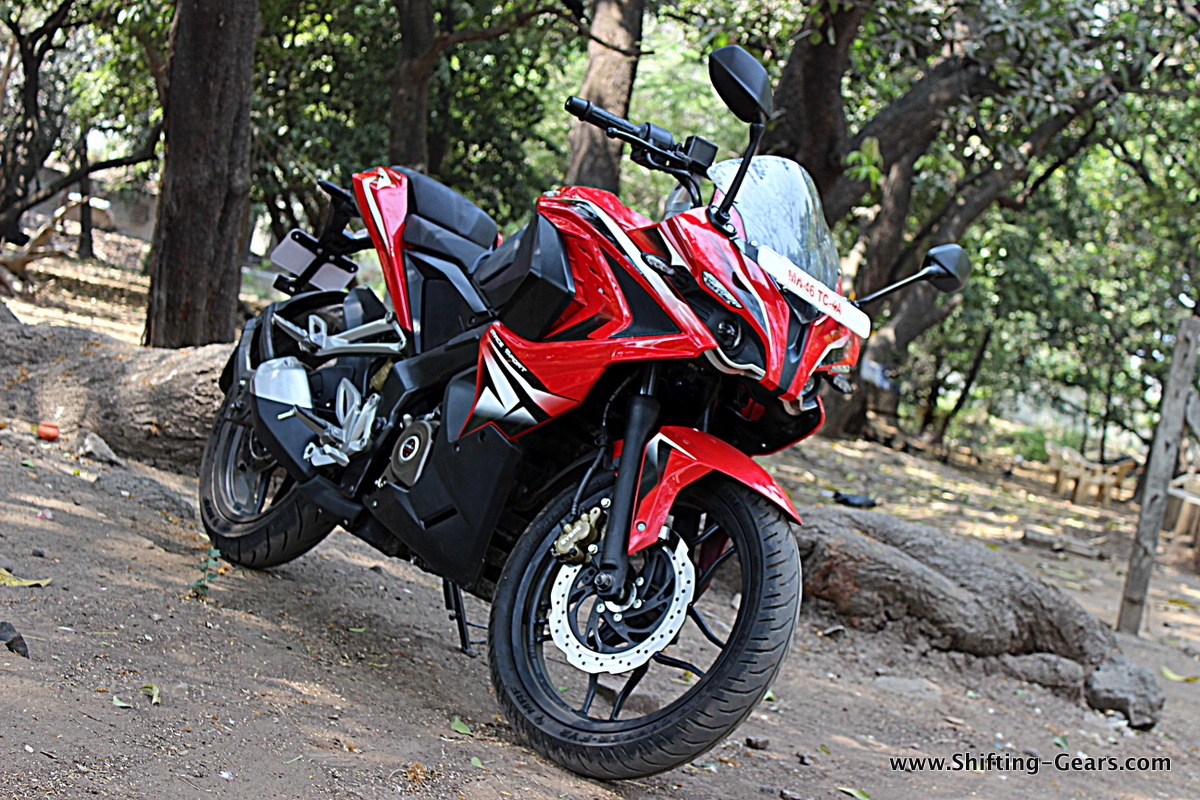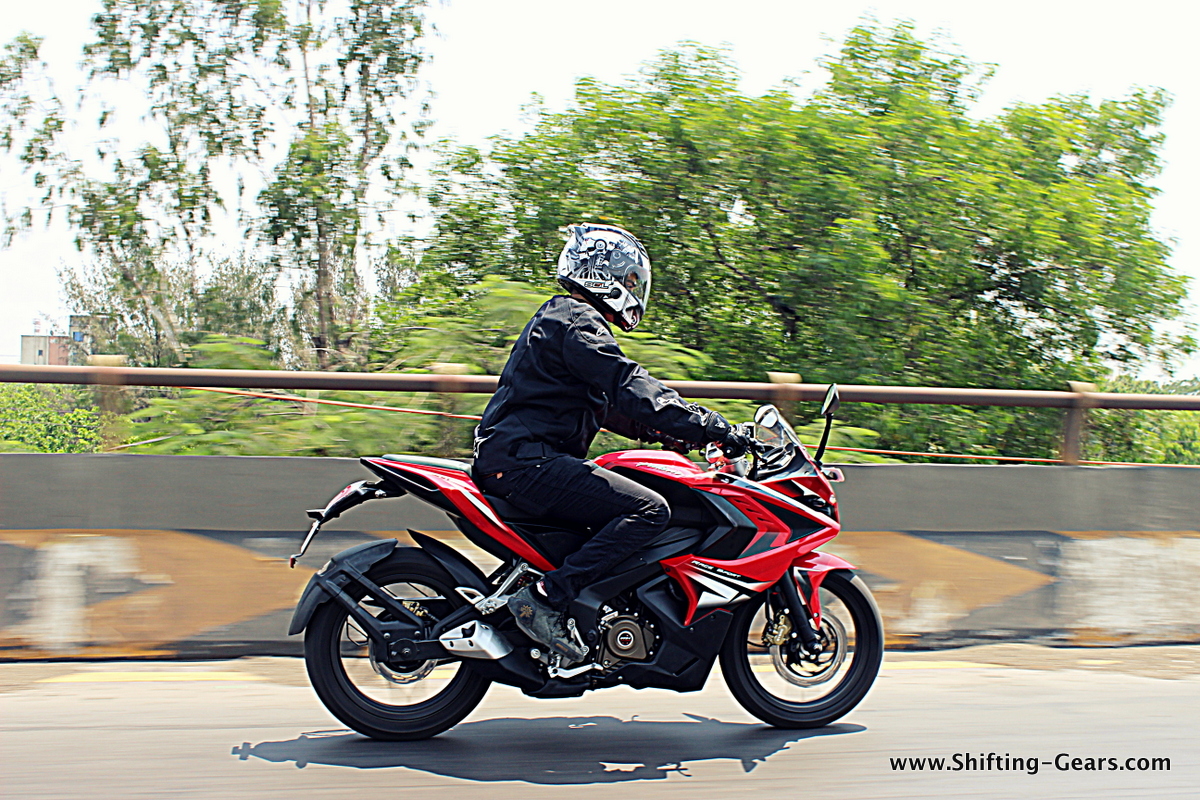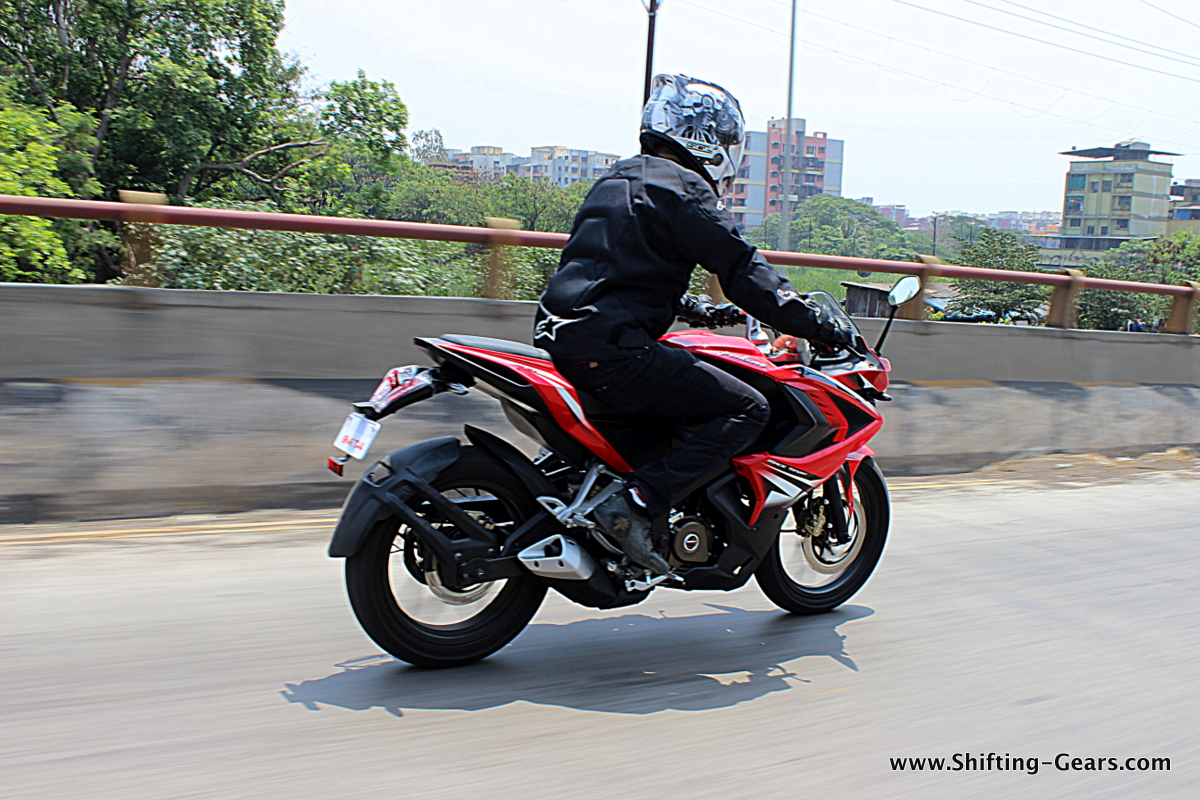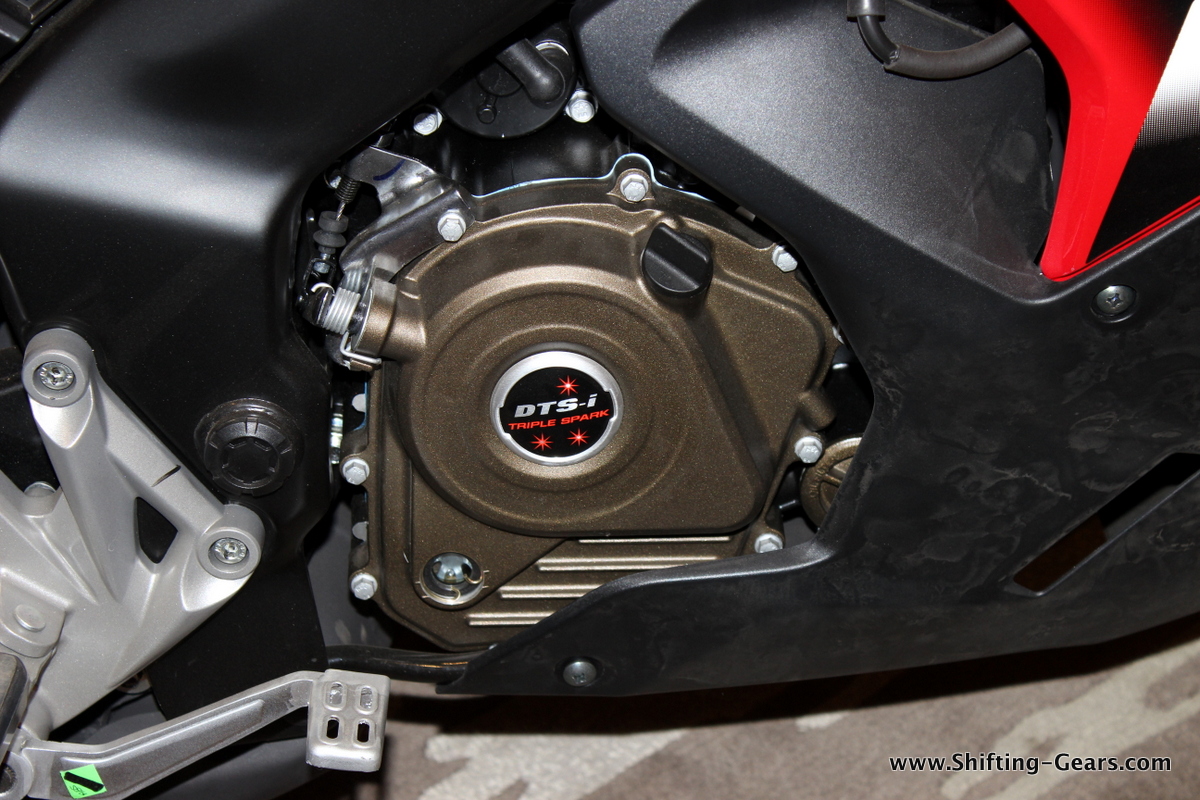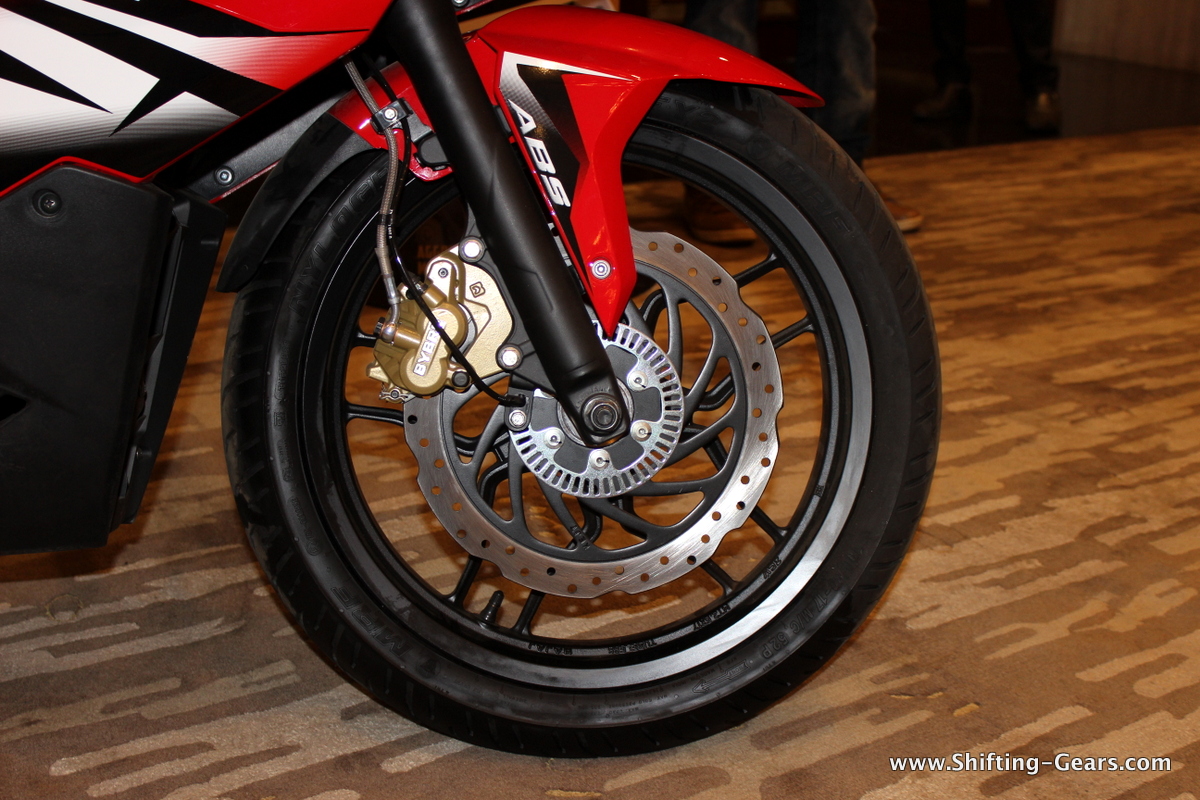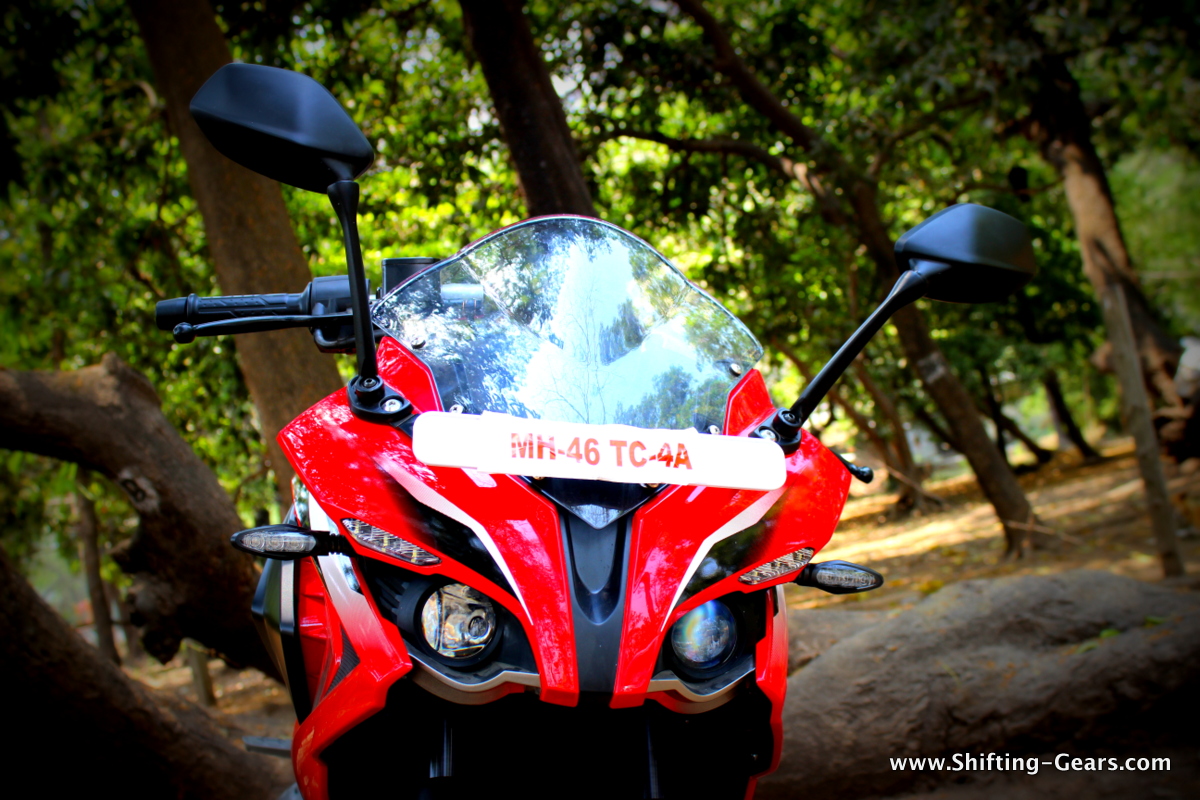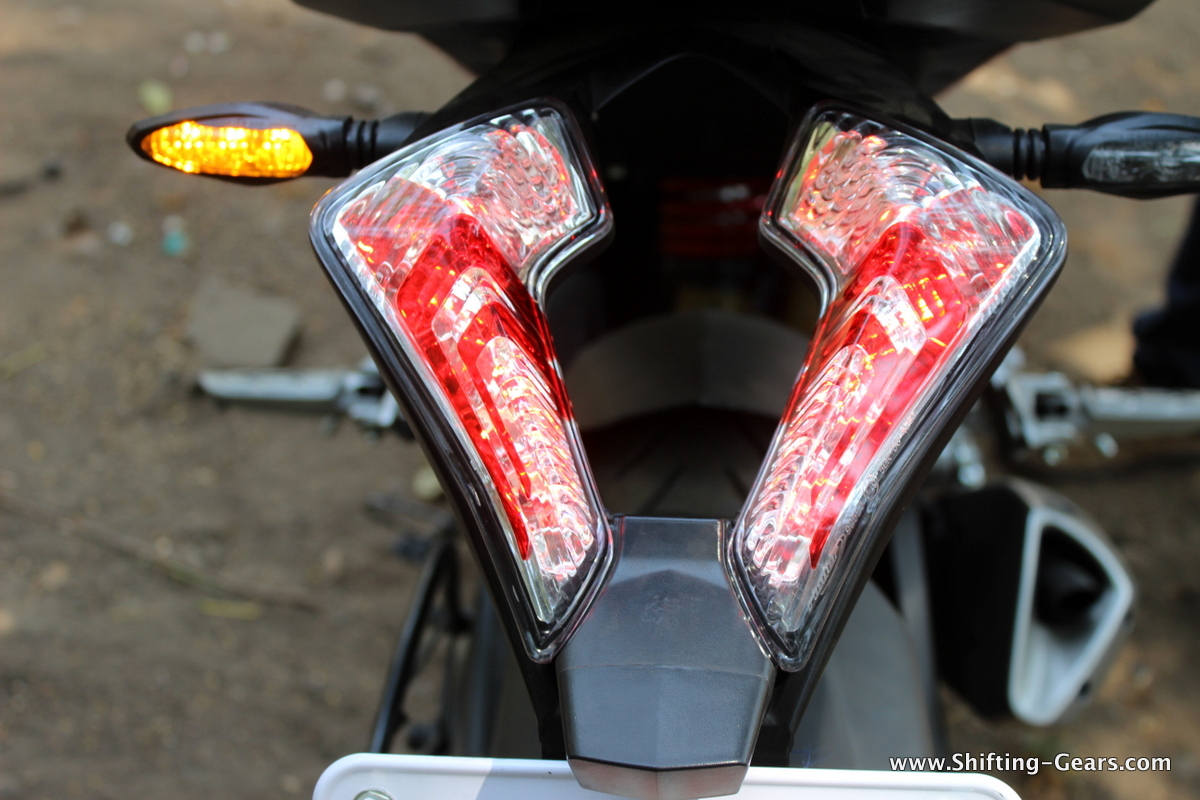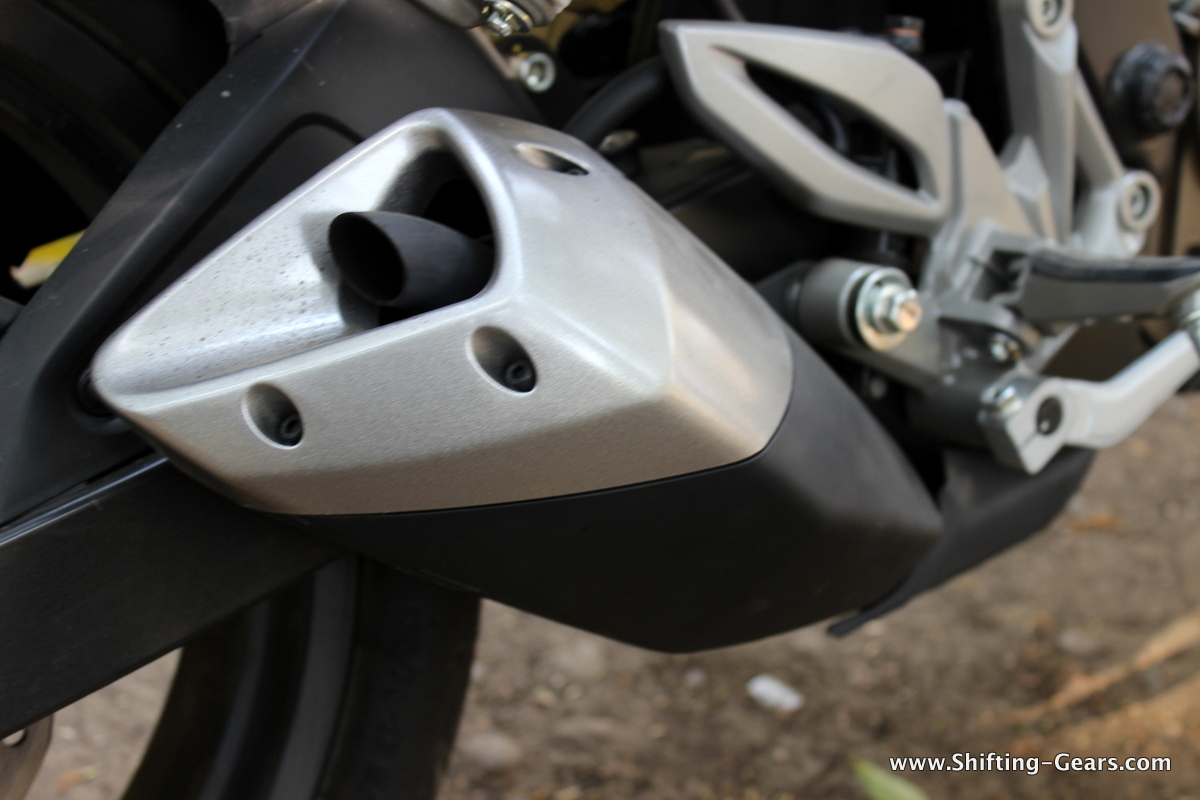The Indian two-wheeler market has been expanding at a fast pace. Not just in the recent past, but also back in the day, almost more than a decade ago. While most manufacturers were enjoying their market share based on bread & butter commuter motorcycles, Bajaj launched the Pulsar (150 & 180) in India and the brand was an instant hit. From then, till now, the Pulsar brand is iconic of affordable performance motorcycles. In all these years, we have seen a lot of Pulsar versions as well. By a lot, we really mean a lot. The list includes multiple variants of Pulsar 135, Pulsar 150, Pulsar 180, Pulsar 200, Pulsar 220F, Pulsar 220S & Pulsar 200NS.
The Pulsar RS200 has been launched in India at a price of Rs. 1,18,000 for the non-ABS version & Rs. 1,30,000 for the ABS version (ex-showroom Delhi).
And that’s not it, Bajaj has 4 more Pulsar models for India in 2015 which include the Pulsar 150NS, Pulsar 150AS, Pulsar 200AS & Pulsar SS400. Does launching multiple products under the same umbrella work even in today’s date? Time will tell. But Bajaj is really in a fix currently bleeding market share month on month. The Pulsar RS200 is a crucial product for Bajaj to create a stir in the industry and help generate decent volumes by segment standards. The bike has been delayed quite a bit, since it was supposed to make it to the streets by Diwali 2014 or so. Bajaj also claims this is the fastest Pulsar yet. So is the new Pulsar RS200 fast enough to catch up with competition? Does it have what it takes to please the masses & the classes? We took the latest kid on the block for a short spin to find out…
Styling:
When it comes to the styling department, there’s two things we would like to specify. One, the bike looks nothing like a Pulsar and does stand out in the long list of Pulsar motorcycles launched till date. Two, although the design is a bit radical; it is trying to hard to please. While most of us are well aware of the Pulsar RS200’s design language, here are the details.
At the front, a lot has changed. Compared to the semi-faired Pulsar 220 or the most recent Pulsar 200NS; the latest RS200 looks like no other Pulsar built before. The design difference is a revolution and not an evolution. But if you look closely to at the international motorcycle scene, you will find that the RS200 has a lot of uncanny resemblance to the Energica Ego electric motorcycle. At the front, the Pulsar RS200 makes use of dual projector headlamps. Both of these projectors are recessed and surrounded by black plastic housing. Below, they get a silver accent. Bajaj now offers 3 LED pilot lamps (3 each on either side) on the RS200. These units however are not DRLs and activate when you switch on the parking lamps. Turn indicators are also of the LED type, similar to the KTM siblings. The face of the motorcycle is split into two with a noticeable recessed section, seen in black. Above, the clear lens windscreen gets a bubble like effect. It does look good, and even functions well. When you crouch at speeds, it deflects the wind over your helmet nicely. Rear view mirror stalks are a bit curved and house an almost leaf shaped unit. Rear view mirrors are not body coloured, and we’re glad that they are not. Number plate is mounted using the same bolt points as the rear view mirrors. Amongst all this, there are a couple of black & white decals trying to act cool. Below, you get a body coloured front mudguard and there are a couple of decals thrown here as well. ABS is slapped over this same decal on the ABS equipped variant. The telescopic front fork is painted in matte black and it holds on to the same set of alloy wheels which we have seen on the Pulsar 200NS. The front disc brake is now bigger and uses a 300mm disc. Seeing the ABS pulsar ring on a Bajaj Pulsar is a welcome change, since most of the owners like to zip around corners.
Come to the side, and you’ll instantly notice how busy the design is. It just doesn’t look clean. Sharp panels all around the body is far from pleasant, compared to the understated yet classy Japanese competitors. The fairing points sharpy towards the front, all the way up to the headlamp. Then it gets the cheesy black & white decals. It also sports a black mesh like insert on the front end of the fairing. Behind, it gets 3 very unnecessary pseudo aero duct-like elements. Then, another angular black body panel where the fairing meets the fuel tank. On the lower half of the fairing, you get a decal shouting ‘Race Sport’ and some more black & white stickers below this. The lowest fairing panel, the engine underbelly is seen in matte plastic. Honestly, the quality of this part felt a bit sub-par compared to competition. Also, if it was finished in gloss paint, it would have looked a bit better. This will surely be a dust magnet. The fairing has a lot of ducts for the engine to let out heat when on the go. The fuel tank again is full of angular crease lines. The top section is body coloured and houses a silver coloured fuel filler cap. The Pulsar emblem sits here, in matte silver finish. As if there weren’t enough decals around the bike, Bajaj has slapped one behind the fuel filler cap as well. A thoughtful addition is the thick tank protector. It’s a chunky piece of rubber and soft enough, however the quality of the part feels a bit cheap. It will work well though in holding the riders thighs in place while playing around the corners. The rubber will hold on to your riding gear well, and also protect from scratches on the fuel tank. This will get dull and would need frequent cleaning, or it would pose as grey. Then, the side section of the tank, where your knees tuck-in, also gets a textured plastic panel. Completely unnecessary! This would again be a dust magnet. What’s cool is the airbox. Is is placed below the rider seat, and the covering panel is a mesh section. Although you might find dust covered over here, the bike will surely breathe better. The perimeter frame is partially exposed and is painted in black. The engine cover carries over the same gold / copper paint. Seat is of the split & step-up type.
Coming to the rear end, the highlight here is the tail lamp. It is not flushed into the rear body panel, but is a standalone unit. The split tail lamp gets a clear lens and are LED units with a small reflector section in it. What’s not so cool is that this is prone to damage in case someone rides / drives in too close from behind. Turn indicators are mounted next to the tail lamp and the number plate housing is seen below. For the pillion rider, under the pillion seat, there is a recessed cut-out which will work as a grab rail. Rear panel is painted in body colour and also gets the black & white decals. Pillion seat sits inside the rear panel, and does not extend over the edges. Because of this, there will be a lot of dust and dirt accumulated in the slit, and visible too. Pillion footstep is bolted on and can be taken off during track days. Below, the midship exhaust looks really good. It gets a silver end section and is slightly upswept. The RS200 gets the same rear tyre hugger like the 200NS. Saree guard too is identical. Rear wheel houses the petal disc brake mounted on a black alloy wheel. If looked from underneath, the lower end of the bikes rear end is neatly covered in plastic.
To sum up the styling department, we think Bajaj has gone a bit over the top. The Pulsar RS200 although a fresh new design, is honestly a bit overdone. If the bike drops the cheesy decals, it would be a lot more easy on one’s eyes. Build quality & paint finish is decent, although not better than say a Yamaha YZF-R15.
Instrumentation & ergonomics:
Instrument cluster on the Pulsar RS200 is identical to the 200NS. It sports the same 3-pot layout with an analogue tachometer in the centre, a digital display to the right & tell tale lights on the left. The difference is in the backlit. While the 200NS gets an amber backlit, the Pulsar RS200 gets a blue backlit. Bajaj has missed an opportunity to make the instrument cluster a full-digital unit or at least add other features like DTE, 0-60 kmph timer, etc. The plastic section around envelopes the instrument cluster neatly. Switch gear & plastic quality is decent, and part sharing with the 200NS is evident. Clip-on handlebars are painted in silver, and look rather tall (height from where they are mounted).
Hop-on and the Pulsar RS200 although looks radical, the riding position is rather relaxed. The bike only looks aggressive but would eventually suit riders who prefer a neutral riding position. Don’t get us wrong though, it has the right amount of sporty feel to it. Footpegs are rear-set & the rider does crouch forward a little. Taller riders, say 5’10” and above would find the riding position close to upright, thanks to the tall clip-on units. Also, there is enough room around the chiseled fuel tank to accommodate your knees while playing around corners. Seat compound is decent and there is enough room available.
Getting on and off the RS200’s pillion seat is much easier say compared to an R15. Also, the pillion seat offers decent room by sportsbike standards. The recessed section to hold on for the pillion works well, and is easily accessible. This is much better than offering a seat-strap. Pillion seat compound is also decent, and not too many would complaint.
Engine, performance & handling:
Note: Riding impressions are based on a short spin, a detailed report & track test will be published by mid-April, 2015.
Powering the Bajaj Pulsar RS200 is a 199.5cc, single-cylinder, liquid-cooled, fuel-injected petrol motor producing 24.5 PS at 9,750 RPM and 18.6 Nm of torque at 8,000 RPM matched to a 6-speed gearbox. Power figure is 1 PS more than the 200NS and torque has increased by 0.3 Nm. The engine is similar to the Pulsar 200NS and continues with the Triple Spark technology. However, the RS200 gets fuel-injection and not a carburetor.
Fire up the 200cc motor and the bike idles in a refined manner. NVH levels are noticeably better compared to the 200NS. Not just at idle, but also when on the go, the RS200 feels a lot more refined. Vibrations are very well contained, on the handlebar as well as on the footpegs.
Within the city, the bike ambles comfortably. During our short spin, at city speeds, the bike was very happy and not heating up regardless of being covered with the fairing from all sides. Even when we let it idle for sometime, the radiator did not kick in very easily, and this is on a hot 40 degree summer afternoon.
On the highway, thanks to the addition of fuel-injection, throttle response feels very crisp. Twist your wrist and there is instant progress. Although the RS200 won’t beat the 200NS in 0-100 kmph timesheets, the better in-gear acceleration is quite noticeable.
Power figures are higher than the Pulsar 200NS, but in real time, the initial acceleration doesn’t feel too different. This is also because the RS200 is 20 kg heavier.
Exhaust note is throaty when revved hard, but nothing to write home about it.
Ground clearance is rated at 157mm, which is 12mm lower than the 200NS. However, the bike tackled speed bumps easily, without scraping the bottom.
Ride quality is complaint, and the RS200 will keep the riders happy. The suspension setup is medium, not too stiff & not too soft. Neutral handling will not offend many, however do not expect it to be as sharp as the Yamaha R15 or Honda CBR150R.
Another good change on the RS200 are the MRF tyres. The Pulsar 200NS came equipped with horrible Eurogrip tyres, and these MRFs offer much, much better grip at all times.
Braking performance from the disc brake setup at the front & back is acceptable. We couldn’t test the ABS equipped model, but expect a better front end bite from that particular model, with more confidence while hitting the brakes during a corner. However, the single-channel ABS is a let down. Even the rear wheels lock-up and providing ABS on just the front wheels beats out logic.
So if you were eagerly waiting for the Pulsar RS200, yes – it is a better Pulsar than the Pulsars before. Loaded with features, the bike looks funky enough to attract the young college going crowd. The affordable price tag will also attract a wider audience. Pulsar 200NS potential owners however will be a little shy thanks to the 25,000+ premium being charged. Our only grouse is that the bike looks a bit overdone, and could have been a bit better around certain areas. But then, it carries the Pulsar badge, and is bound to be a common sight on the Indian streets very soon.
If you’d like to see the differences between the Pulsar RS200 & Pulsar 200NS, click here.

